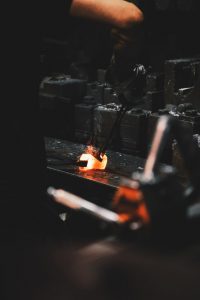Compassionate and Professional Bereavement Clearance
Losing a loved one is a deeply emotional experience, and dealing with their home and possessions often becomes a difficult, time‑consuming task. Receive a fully managed bereavement house clearance service, designed to take the physical and emotional burden off your shoulders. Each job is approached with respect, sensitivity, and professionalism, helping you navigate a challenging time with dignity and care.
Whether you’re handling the clearing of a family home, emptying a flat, or preparing a property for sale or rental, comprehensive bereavement clearance services cover every detail. From sorting and packing to removal, disposal, storage, and optional cleaning, the aim is to make the process as smooth and respectful as possible. Its not just about clearing the property, it’s about helping you find closure.
Why Choose A Bereavement Clearance Service
Sensitive Handling with Respect and Discretion
Bereavement clearance isn’t just about removing items, it’s about handling a loved one’s life and memories with respect. Companies should be trained to approach each clearance with empathy and discretion. Every item, from furniture and personal effects to sentimental keepsakes, are treated with care, ensuring that anything you wish to keep is carefully separated, packed, and stored or delivered as requested. Meanwhile, items designated for removal are handled safely and responsibly.
Fully Licensed and Environmentally Responsible
As fully registered licensed waste carriers, clearances should comply with all current regulations for disposal of household waste and unwanted items. This ensures that donations, recycling, and disposal are carried out legally and ethically. If items are suitable for charity donation or recycling, these are sent to the best places, otherwise, they are disposed of waste at licensed facilities in accordance with legislation.
Choosing a licensed company is essential. Using a non‑licensed operator can result in improper disposal or environmental violations. You have the assurance of a compliant, professional approach that respects both your requirements and regulatory obligations.
Flexible and Tailored Clearance Solutions
No two bereavement situations are the same. Some clients need a full property clearance, others just want help removing large furniture or excess items, while some require secure storage for items they are not ready to part with yet. Flexible options are provided to accommodate all these needs:
- Full house clearance, removing all contents from property including furniture, white goods, general household items, and rubbish.
- Partial clearance — clearing specific rooms, lofts, garages, sheds or outbuildings if only part of the property needs emptying.
- Sensitive sorting and packing — if you have items you wish to keep, these are carefully packed and labelled for you, so you , or other family members, can review them later at your pace.
- Furniture moving or storage — safely move selected furniture to another address or place items into secure short‑ or long‑term storage.
- Optional property clean‑up — carry out a standard clean of the property (kitchens, bathrooms, carpets/floors, internal surfaces) once the clearance is complete, this is ideal if the property is to be handed over, sold, or rented.
This tailored approach ensures you only pay for what’s required, and the clearance process aligns with your timeline, emotional readiness, and practical needs.
Bereavement Clearance Services For You
A bereavement clearance involves heavy lifting, disposing of bulky items, and careful handling of personal effects and potentially sensitive materials. Allowing professionals to manage this process avoids risks of injury, improper disposal, or environmental non‑compliance. Professional clearance companies provide trained staff, protective gear, appropriate equipment and follow legal disposal procedures, delivering both safety and compliance.
For executors living far from the property or managing several administrative tasks, a full-service bereavement clearance can shorten what might otherwise be a drawn‑out and emotionally draining process, allowing you to focus on what matters most.

